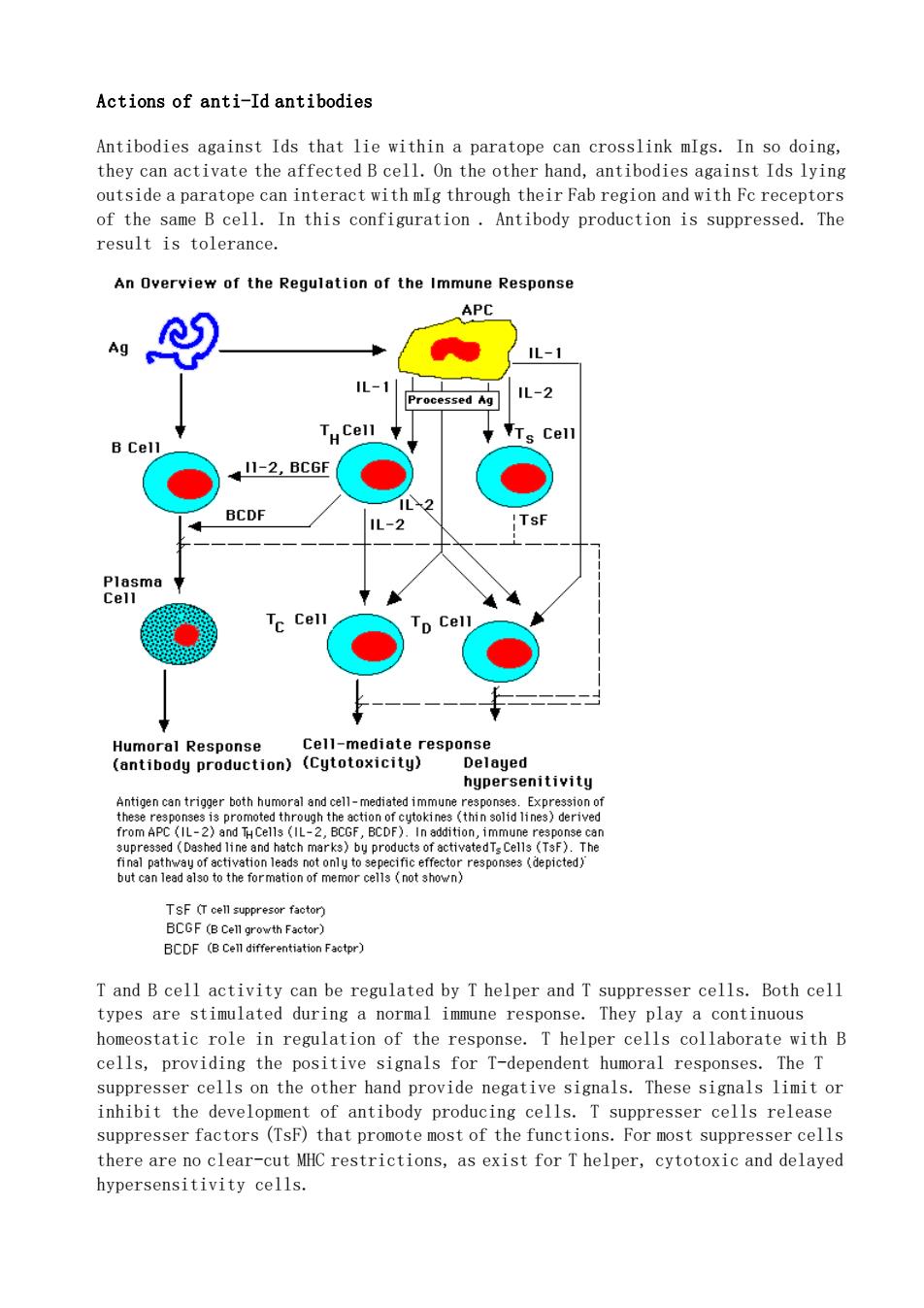正在加载图片...

Actions of anti-Id antibodies Antibodies against Ids that lie within a paratope can crosslink mIgs.In so doing, they can activate the affected B cell.On the other hand,antibodies against Ids lying outside a paratope theirFab regionandwith of the same B cell.In this configuration Antibody production is suppressed.The result is tolerance. An Overview of the Regulation of the Immune Response APC Ag L-1 ssed Ag B Cel 1-2,BC6F BCDF Tc Cell Cell-mediate response (antibody production)(Cytotoxicity) Delayed ath bumoral and cell- IL-2p eartionotc dT-Cells (TSE). respo es (depi TsFTcel suppresor factor) T and B cell activity can be regulated by T helper and T suppresser cells.Both cell types are stimulated during a normal immune res ponse.The play a continuous eostatic role in regulation of the response.T helper cells collaborate with B cells,providing the positive signals for T-dependent humoral responses.The T suppresser cells on the other hand provide negative signals.These signals limit or inhibit the development of antibody producing cells.T suppresser cells release suppresser factors(TsF)that promote most of the functions.For most suppresser ce there are no clear-cut MHC restrictions,as exist for Thelper,cytotoxic and delayed hypersensitivity cells.Actions of anti-Id antibodies Antibodies against Ids that lie within a paratope can crosslink mIgs. In so doing, they can activate the affected B cell. On the other hand, antibodies against Ids lying outside a paratope can interact with mIg through their Fab region and with Fc receptors of the same B cell. In this configuration . Antibody production is suppressed. The result is tolerance. T and B cell activity can be regulated by T helper and T suppresser cells. Both cell types are stimulated during a normal immune response. They play a continuous homeostatic role in regulation of the response. T helper cells collaborate with B cells, providing the positive signals for T-dependent humoral responses. The T suppresser cells on the other hand provide negative signals. These signals limit or inhibit the development of antibody producing cells. T suppresser cells release suppresser factors (TsF) that promote most of the functions. For most suppresser cells there are no clear-cut MHC restrictions, as exist for T helper, cytotoxic and delayed hypersensitivity cells